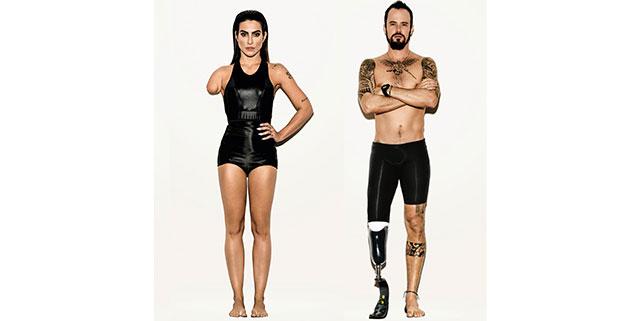
Related Class
Photoshop Ethical Boundaries Pushed
- Published on

Every four years immediately following the Olympics the Paralympics games occur in the same cities, showcasing world-class athletes who overcome physical disabilities to participate. A bizarre publicity effort surrounding this year’s games has led ethicist and media-watchers wondering whether we are seeing an unethical Photoshop use, a novel way to call attention to the Paralympic games, or poor judgment by a photo editor.
Voge Brazil’s pushes limits of ethical Photoshop use
The Photoshop ethical controversy started with Vogue magazine’s efforts to call attention to the Paralympic games. They elected to do this by taking able-bodied athletes and then use Photoshop to make them appear disabled. What’s surprising with the recent Photoshop controversy by Vogue Brazil is the widespread availability of disabled athletes they could have photographed for use in their story. Vogue’s Photoshop use mirrors the many Photoshop retouching fails seen by retailers and advertisers. Retailer Target’s Photoshop failure was widely criticized for creating false body images, and other retailers have been stung by similar criticism.
Photoshop ethical guidelines
Most mainstream media tend to have constraints that conform to set of norms for the ethical use of Photoshop in news stories. Some media outlets only accept unretouched images from their photographers, or may only allow minor adjustments, such as lightening or darkening an image for clarity using Photoshop. Mainstream news outlets have tended to avoid Photoshop ethics controversies, but this appears to be changing with the publication of these images in Vogue in the days leading up to the Paralympic games.
Photoshop fail, ethical lapse, or publicity gimmick?
It’s unusual to see a global brand and mainstream magazine caught-up in an ethical controversy surrounding their use of images. While fashion publications certainly see their share of Photoshop controversies, they tend to involve the slimming of models rather than the wholesale replacement or removal of body parts. As an organization that delivers Photoshop training classes, we appreciate its creative possibilities. Yet we’re pondering why the thousands of real-life Paralympic athletes were ignored for this story. There must be many great stories which showcase spirit and resolve to compete, making it difficult to understand why Vogue turned to Photoshop, as sometimes real-life can be better than Photoshop.
About the author
Jennifer Smith is a user experience designer, educator and author based in Boston. She has worked in the field of user experience design for more than 15 years.She has designed websites, ecommerce sites, apps, and embedded systems. Jennifer designs solutions for mobile, desktop, and iOT devices.
Jennifer delivers UX training and UX consulting for large Fortune 100 companies, small start-ups, and independent software vendors.She has served as a Designer in Residence at Microsoft, assisting third-party app developers to improve their design solutions and create successful user experiences. She has been hired by Adobe and Microsoft to deliver training workshops to their staff, and has traveled to Asia, Europe, India, the Middle East, and across the U.S. to deliver courses and assist on UX design projects. She has extensive knowledge of modern UX Design, and worked closely with major tech companies to create educational material and deliver UX workshops to key partners globally. Jennifer works with a wide range of prototyping tools including XD, Sketch, Balsamiq, Fireworks, Photoshop, Illustrator, and Blend for Visual Studio. She also works extensively in the fields of presentation design and visual design.
Jennifer is also an expert on Photoshop, digital image editing, and photo manipulation. Having written 10 books on Photoshop, and having consulted and provided training to major media companies and businesses around the globe.
Jennifer is the author of more than 20 books on design tools and processes, including Adobe Creative Cloud for Dummies, Adobe Creative Cloud Digital Classroom, and Photoshop Digital Classroom. She has been awarded a Microsoft MVP three times for her work with user experience design in creating apps for touch, desktop, and mobile devices. Jennifer holds the CPUX-F certification from the User Experience Qualification Board and assists others in attaining this designation in leading a UX certification course at American Graphics Institute. She is a candidate for a Master’s degree in Human Factors in Information Design.


